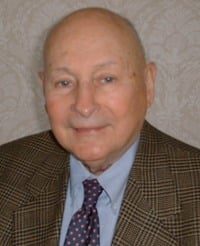
Most Americans who have become aware of the academic and moral decline of public education tend to believe that the humanistic curriculum that now dominates the system is of relatively recent origin. They believe that the great emphasis now placed on the “affective domain”— all of those programs devoted to values clarification, sensitivity training, group dynamics, feelings, sexuality — is somewhat new. Actually, it is far from new. The fact is that the groundwork for what we have in our schools today was laid early in the 20th century by the Progressives who knew exactly where they wanted to lead America: to a socialist society.
The Progressives were a new breed of educator that came on the scene in the late 19th century. These men, members of the "liberalized" Protestant academic elite, no longer believed in the religion of their fathers. They put their new faith in science, evolution, and psychology. Science provided the means to know the material world. Evolution explained the origin of man, thus relegating the story of Genesis to mythology. And psychology institutionalized the scientific study of human nature and provided the scientific means to control human behavior.
Many of these progressives studied in Germany under Prof. Wilhelm Wundt, the father of experimental psychology. Among the most noteworthy were G. Stanley Hall, James McKeen Cattell, Charles Judd, James Earl Russell, James R. Angell, and Frank E. Spaulding. They brought back to America Wundt’s teachings and methodology and set up psych labs of their own in American universities. In these labs man was to be studied scientifically as one would study an animal. But because human beings could not be experimented on in labs, the psychologists used animals.
In 1928, Prof. Edward L. Thorndike, head of educational psychology at Teachers College, Columbia University, wrote:
… experiments on learning in the lower animals have probably contributed more to knowledge of education, per hour or per unit of intellect spent, than experiments on children. … The best way with children may often be, in the pompous words of an animal trainer, "to arrange everything in connection with the trick so that the animal will be compelled by the laws of his own nature to perform it."
Out of this methodology emerged behavioral psychology. In distinguishing behaviorism from the earlier introspective psychologies, John B. Watson wrote that the behavioral psychologist “must describe the behavior of man in no other terms than those you would use in describing the behavior of the ox you slaughter.”
Thus, the behavioral psychologist studies only what can be seen and measured in human behavior. Watson wrote: “Behaviorism claims that consciousness is neither a definite nor a usable concept. The behaviorist … holds, further, that belief in the existence of consciousness goes back to the ancient days of superstition and magic.”
The progressive-behaviorist curriculum thus consists mainly of animal training. For example, in the field of reading instruction, Prof. Walter Dearborn of Harvard described the look-say method as follows (School & Society, October 19, 1940): “The principle which we have used to explain the acquisition of a sight vocabulary is, of course, the one suggested by Pavlov’s well-known experiments on the conditioned response. This is as it should be. The basic process involved in conditioning and in learning to read is the same.”
That the ultimate goal of behaviorism is the control of human behavior was spelled out quite plainly by Watson in his book Behaviorism (p. 11): “The interest of the behaviorist in man’s doings is more than the interest of the spectator — he wants to control man’s reactions as physical scientists want to control and manipulate other natural phenomena. It is the business of behavioristic psychology to be able to predict and to control human activity.”
The Progressives’ plan to socialize America required the most thorough and radical reform of American education. To this they applied their extensive knowledge of behavioral psychology. That the goal was socialism was clearly known and understood throughout the educational establishment. That it meant downgrading academics in favor of socialization was also understood, for in a socialist society an elite rules at the top, and the masses below are relegated to the subservient, mindless tasks of an industrial system.
In 1916, Dr. Charles W. Eliot, then-President of Harvard, advocated reform that would hasten the shift from academics to vocational activities. He wrote: “The changes which ought to be made immediately in the programmes of American secondary schools, in order to correct the glaring deficiencies of the present programmes, are chiefly: the introduction of more hand, ear and eye-work — such as drawing, carpentry, tuning, music, sewing and cooking." (School & Society, 3/18/16.)
Prof. Walter R. Smith, of State Normal School, Emporia, Kansas, in an article entitled “The Fundamentals of a Socialized Educational Program,” wrote in 1918: “The process of socialization will require greater emphasis upon the social studies in our schools. The linguistic and mathematical core of the old classical curriculum must give way to a social core.” (School & Society, 1/13/18.)
These men reflected the thinking of John Dewey, who had written in 1898:
There is … a false educational god whose idolators are legion, and whose cult influences the entire educational system. This is language-study — the study not of foreign language, but of English; not in higher, but in primary education. It is almost an unquestioned assumption of educational theory and practice both, that the first three years of a child’s school-life shall be mainly taken up with learning to read and write his own language. …
My proposition is, that conditions — social, industrial, and intellectual — have undergone such a radical change, that the time has come for a thoroughgoing examination of the emphasis upon linguistic work in elementary instruction. …
The plea for the predominance of learning to read in early school-life because of the great importance attaching to literature seems to me a perversion.
Why did these intelligent men believe in socialism? Because as atheists, they were convinced that socialism offered the only salvation from evil. To them the causes of evil were societal: ignorance, poverty, and social injustice. As evolutionists they rejected such concepts as sin, innate depravity, or the fall of man. They thus attributed the causes of social injustice to capitalism, individualism, and religion. By substituting socialism, collectivism, and theism in their place, they had no doubt that heaven on earth was quite attainable.
The Progressives knew that the new society they were trying to build required of them extraordinary efforts and devotion. Their vision included a globalist humanism which was well articulated in a speech given in 1918 by Prof. Charles H. Judd, the Wundtian dean of the School of Education at the University of Chicago. Judd declared:
I am arguing for a new kind of humanism … We must build in the future a social structure for which there is no pattern. The humanism of the future will be dependent, not on imitation, but on self-determination. …
I have been reading, as I am sure many of you have, the platform of the English Labor Party. Its program of social reform and of education for more intelligent citizenship makes a profound appeal to every lover of democracy. I believe the English Labor Party is right. …
Perhaps the time will come when the psychological differences of nations will be assimilated into a larger pattern of intelligent appreciation of the solidarity of a rational humanity. (School & Society, September 10, 1918)
Indeed, it was Judd who masterminded this reform of the education system. In 1915, he organized the Cleveland Conference, a semi-secret annual meeting of top educators. Judd urged the members of the conference to undertake “the positive and aggressive task of … a detailed reorganization of the materials in schools of all grades.”
It was Judd’s protégé, William Scott Gray, who created the Dick and Jane look-say reading instruction program that was to start America on its literacy decline. In 1955, when Why Johnny Can’t Read was published, Gray organized the International Reading Association to make sure that look-say would dominate reading instruction in American primary schools for decades to come despite the opposition of parents.
The 1920s and ‘30s were devoted to a total transformation of the public school curriculum. Charles Judd told a meeting of the American Political Science Association in 1931 that the entire organized profession was now engaged in the process of promoting “a movement to bring to full realization the project of socializing the whole body of instructional material in schools and colleges.”
The work, in fact, was being done so vigorously that a reporter — attending the 1932 meeting of the NEA’s school superintendents department, held in Washington, D.C., and attended by John Dewey, Charles Judd and other progressives — could write: “Here, in the very citadel of capitalism … this group of outstanding spokesmen of American education talked a remarkably strong brand of socialism.”
And you can be sure that if a superintendent wanted to advance his career he had to toe the socialist line with enthusiasm.


